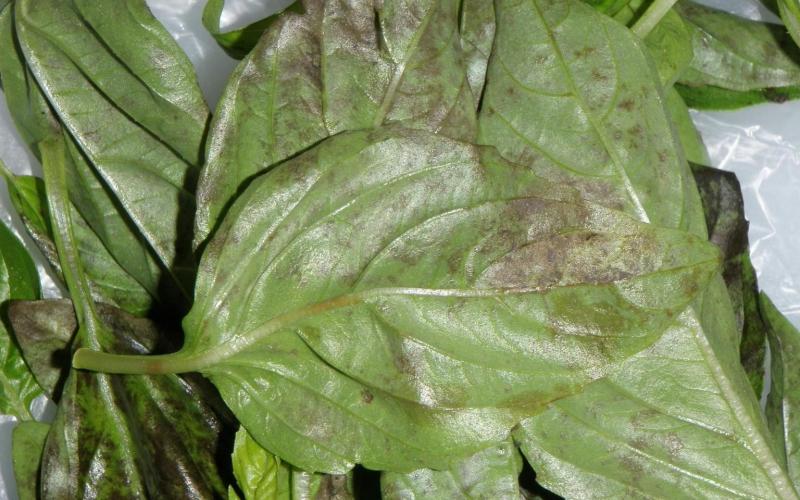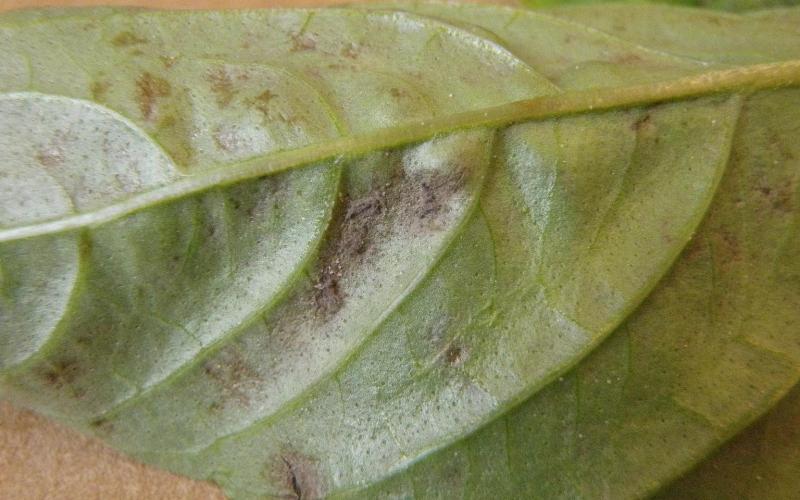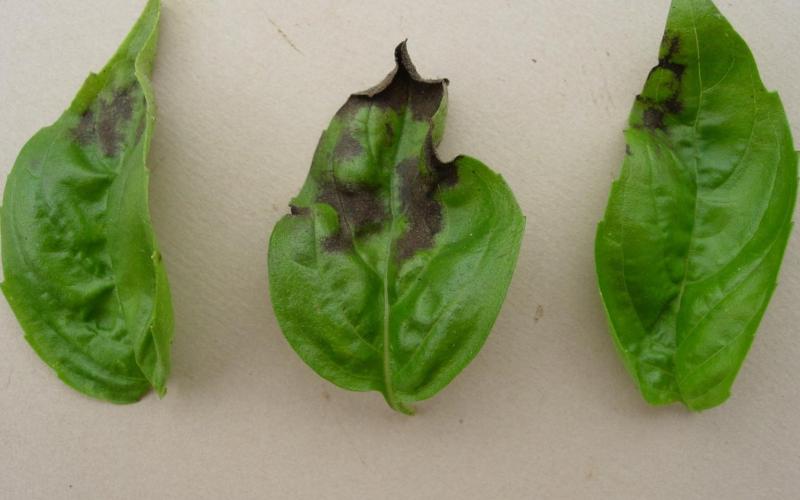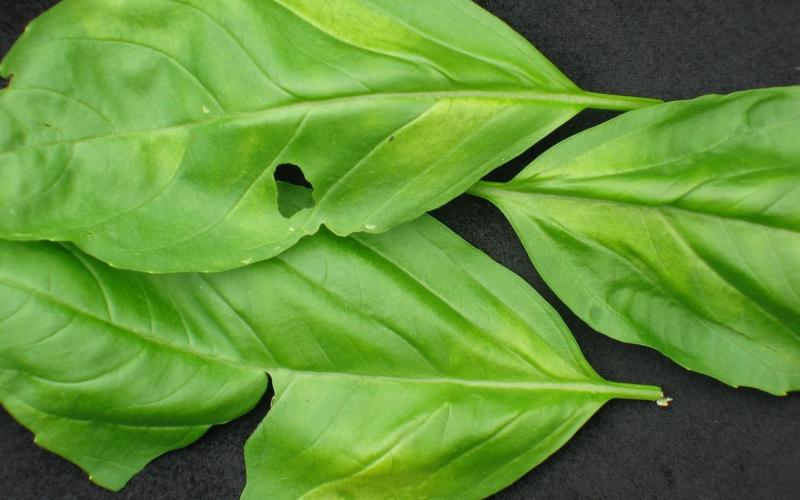Scientific name: Peronospora belbahrii Thines
Native range: First documented in Uganda in 1933
At Risk
Sweet basil varieties are the most susceptible. Other varieties, such as red or Thai basils, have demonstrated some resistance. Symptomatic basil is unmarketable, which is of significant concern for commercial producers of this popular culinary herb. Under the right conditions, basil downy mildew can spread rapidly and cause large yield loss.
Distribution
Basil downy mildew was first found in the U.S. in Florida in 2007 and can now be found in most states of the U.S. It was first found in Minnesota in 2012 (Ramsey County) and has been documented in the greater Twin Cities metropolitan area each year since.
Basil downy mildew does not overwinter outdoors in Minnesota, but instead is reintroduced to the environment each growing season by the importation of infected seed or plants. Basil downy mildew may also spread via spores blown in the wind.
Biology
The pathogen responsible for basil downy mildew, Peronospora belbahrii, is part of a larger group of fungus-like organisms known as “water molds” which are actually more closely related to algae than to fungi.
In the U.S., basil downy mildew is only able to survive within infected seed, or reproduce asexually in living plants (during the growing season or in greenhouse environments). Sexual reproduction requires a specific mating partner not currently present in the U.S., which would produce what are known as oospores. Basil downy mildew is unable to survive in the absence of living plant material for this reason.
Identification
Initially, basil downy mildew can be mistaken for nutrient or mineral deficiencies in the plant, with leaves becoming yellow at the base of the plant and continuing upwards. Upon closer inspection, the pattern of yellowing will present as bands between major leaf veins with corresponding fuzzy gray spores of the pathogen on the leaf underside. As the infection progresses, chlorosis and the presence of spores will become quite apparent and widespread.
Look-Alikes
Basil downy mildew produces symptoms in basil similar to those seen from malnutrition and heat stress or sunburn. Spores on a leaf can also look like dirt or dust on plant tissue.
What Can I Do?
There are no effective ways to treat for basil downy mildew once plants have become infected, so planting resistant varieties and using fungicides prior to infection is recommended. For more information on the susceptibility of various basil varieties as well as appropriate fungicides, consult the University of Minnesota Extension’s basil downy mildew page.
If early stages of basil downy mildew are suspected on a plant, suspicious leaves can be incubated in a dark place enclosed in a plastic bag with a damp paper towel. Any resulting spore production in the following days may indicate the presence of basil downy mildew. Contact the MDA via email at reportapest@state.mn.us for help with identification.
Smarty Plants Podcast
 Discover Smarty Plants, the Minnesota Department of Agriculture's podcast that digs into the fascinating world of invasive species. Join expert guests as they share insights and solutions to protect our environment and agricultural resources. Visit Smarty Plants and start listening today.
Discover Smarty Plants, the Minnesota Department of Agriculture's podcast that digs into the fascinating world of invasive species. Join expert guests as they share insights and solutions to protect our environment and agricultural resources. Visit Smarty Plants and start listening today.





